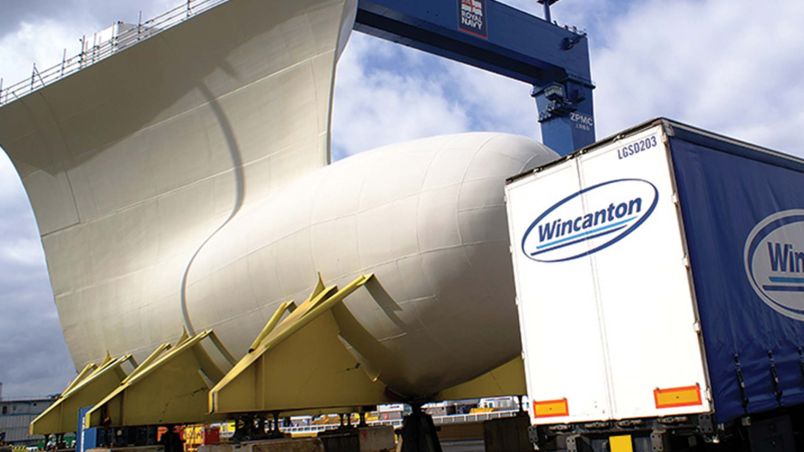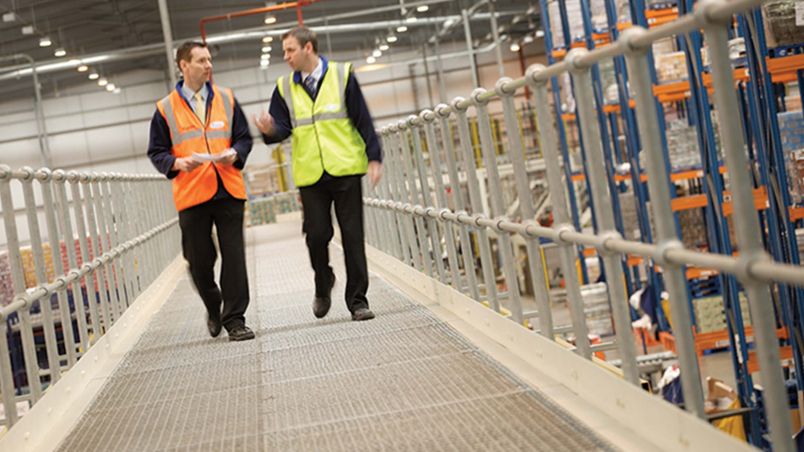The application of innovation
Poor manual handling technique is the main cause of reportable accidents across the logistics industry, with ergonomic injuries responsible for 33% of all workplace injuries and more than 55% of injury costs.
Wincanton is a safety-first business, with people our top priority. On the road, in the warehouse and around our sites; all areas of our business deal with risks daily. Because of this, it is our responsibility to assess hazards effectively, make informed, intelligent plans and prepare for all eventualities to keep everyone safe.
In 2019 the Wincanton W2 Labs programme focused on safety. W2 encourages start-ups and emerging suppliers to pitch ideas for how digitisation can drive improvement across the supply chain. Through W2 Wincanton brings together some of the brightest minds and disrupters to champion new ideas, and tackle industry challenges in innovative ways.
Soter Analytics was successful in qualifying in 2019, with a proposition that informs processes to create better workspaces for all involved. Its wearable technologies help reduce the risk of musculoskeletal injury for Wincanton colleagues in the warehouse.
Following Soter Analytics’ success in W2, Wincanton then trialled the wearable technology and artificial intelligence in a variety of operations, which provided impressive results.
Keeping colleagues safe
Since then, Wincanton has utilised two solutions from Soter Analytics to reduce the risk of ergonomic injuries among colleagues. SoterSpine is focused on lifting activities, such as picking operations, while SoterShoulder is designed for pushing activities such as roll cage movements and home deliveries.
Both solutions consist of a lightweight wearable sensor worn on the collar of workwear, close to the shoulder or spine. The device measures and monitors the wearers at-risk movements, providing real-time audible, vibration and visual biofeedback. This software platform uses an algorithm to identify problematic movements and the risk of ergonomic injuries with all data collated for deeper analysis on the management dashboard.
Artificial intelligence then creates a personalised coaching programme for individual Wincanton colleagues to prevent back and shoulder injuries in the workplace. And if a colleague is returning to work after experiencing an injury the Soter devices will capture data to mitigate further injuries, which in turn provides training to manage the avoidance of re-injury.
Today Soter Analytics is used across eight operations at Wincanton and has delivered a 30% reduction in Spine Hazards per Hour, reducing incidences of poor bending, back twisting and repetitive movements for colleagues in the warehouse.
Testimonial
“We could see a big ambition of the business to use technology to drive improvement and the opportunity to work together to make this possible has been a fantastic achievement.”
Guillaume Le Goff, Chief Commercial Officer at Soter Analytic
30%
reduction in spine hazrds per hour across Wincanton operations
5
number of days the artificial intelligence will need to develop positional self-awareness
20
weight in grams of the wearable technology
3x2
the device measures just 3cm by 2cm
8
number of at-risk movements monitored in real-time




